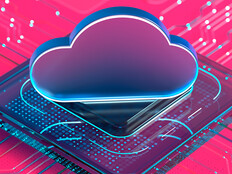How Edge Computing Could Benefit K–12 Classrooms
If cloud computing is about processing data out there, edge computing is the opposite. By leveraging the tremendous computational power of classroom devices, edge enables computing right here — and it may have profound classroom implications.
“For time-sensitive applications, edge brings high-performance computing horsepower as close to the action as possible,” says Marcus Moffett, Cisco’s senior systems engineer director, U.S. public sector.
Mobile phones and tablets are essentially full-scale computers. Many Internet of Things devices likewise have substantial processing power. Suppose educators could harness that potential via edge computing. How might this give their efforts a boost? Here are a few ways:
- Augmented and virtual reality: “Schools are starting to play with augmented realty, and edge becomes a really big enabler of that,” says David Marcovitz, chair of the education specialties department at Loyola University Maryland. “When you try to have these humanlike communications and it’s choppy, that interferes with cognitive processing. Edge computing can make that smoother and make the augmented reality more realistic.”
- Internet of Things: Edge computing could help educators take full advantage of IoT devices; school districts lacking the bandwidth to send sensor information to the cloud could process that data locally. “With a camera tracking eye movements, you could understand how children are learning to read,” says Dan Reed, senior vice president for academic affairs at the University of Utah. “If you put sensors in educational toys, you can learn about behaviors and social dynamics. You can capture safety data in the playground as well — even on the low end of computing capability, you can do some really interesting stuff.”
- Student outcomes: With real-time feedback, edge computing could power learning systems designed to enhance performance. “We might incorporate machine learning and artificial intelligence that can react based on what the student puts into the learning management system — adjust the prompts and the learning to reflect that student’s style,” says Daniele Loffreda, a senior adviser with tech solutions provider Ciena. “Having that happen in real time is a great example of where edge computing can work.”
Edge Computing May Be Useful Against Security Risks
Some see edge computing as a possible remedy to data privacy concerns. If schools could keep data local, rather than send it to a remote provider, that might bolster confidence.
“Right now, people use an app, and the app collects whatever data and shares it to the cloud,” Marcovitz says. “When you collect and store and process the data locally, there is naturally less sharing of information.”
At the same time, edge may well raise a new crop of security concerns. By introducing more devices and linking them together, schools could unleash new vulnerabilities.
“If you have a projector connected to the internet, that can be a point of attack on the entire network,” says Anthony Salcito, vice president of worldwide education for Microsoft. “You have to make sure all of your devices are properly connected and managed in the right way. You don’t want to risk having all these connected devices being compromised.”









